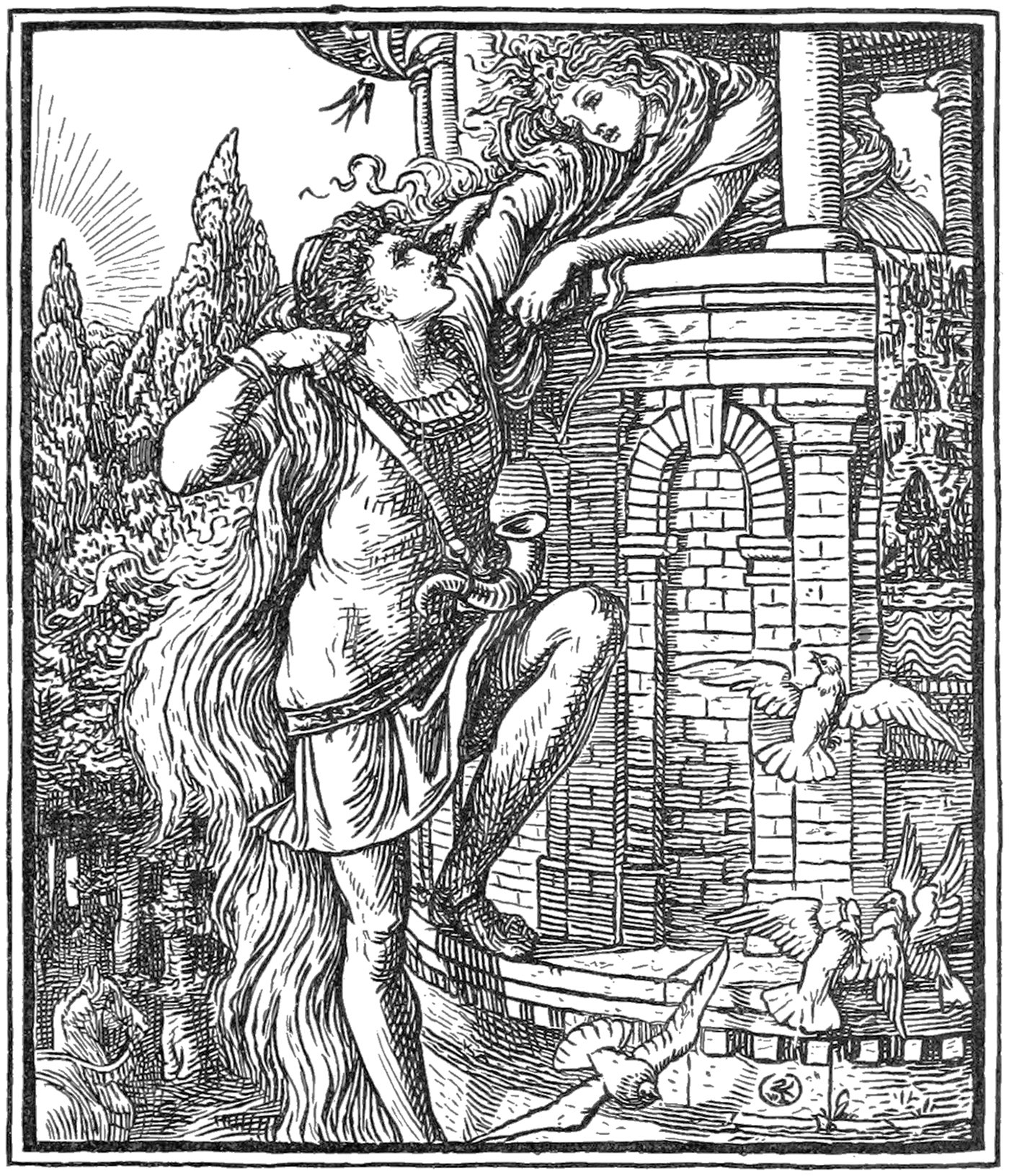Rapunzel and the Isolation of Height
Illustration from the original printing of the Grimm Brothers Fairy Tales, showing Rapunzel getting rescued by the Prince.
The story of Rapunzel and her long hair is a well-known folk tale with ancient origins. It’s the story of a damsel-in-distress and a prince who comes to rescue her. It’s well-worn territory in the world of folk tales, but the specifics of the story reveal a subtext that’s based on verticality.
As the story goes, there is an evil sorceress who lives in a walled-in complex with a large garden. A man sneaks into the garden to get some Rapunzel (an edible salad green) for his pregnant wife, and the sorceress catches him. The sorceress threatens to expose his thievery, and he agrees to give his child to her in exchange for her silence. His wife subsequently gives birth to a daughter, and the sorceress takes the child and names her Rapunzel.
Rapunzel grows into a beautiful young girl with long blonde hair. When she turns twelve, the sorceress locks her in a tall tower with no exit other than a single window. Her only access to the outside world was through the sorceress, who would call up to her with the chant Rapunzel, Rapunzel, let down your hair! Upon hearing this, Rapunzel would lower her hair down to the sorceress who would then climb it.
One day, a prince happened upon the tower and heard Rapunzel singing. He was enchanted, but couldn’t find a way to enter the tower. He returns a few times, and one day he overhears the sorceress call up to Rapunzel to lower her hair. After the sorceress leaves, he repeats the lines in a sorceress-like voice and Rapunzel lowers her hair. He climbs up, they fall in love, he asks her to marry him, and she agrees. Together they make a plan to escape the tower.
The sorceress eventually catches on to their plan, and cuts off Rapunzel’s hair and casts her out into the wilderness. The next time the Prince comes calling, she lets him up with the cut-off hair and he climbs up. They have a confrontation and the prince jumps from the tower. He lands in a briar patch and is rendered blind. From here, he wanders the earth in search of Rapunzel. In the meantime, Rapunzel gives birth to twins. The prince eventually finds her, and after they embrace Rapunzel’s tears cure the prince of his blindness. He then leads her and the children to his kingdom where they live happily ever after.
It’s a pretty standard fairy tale, but the inclusion of the tower reveals why it’s based on verticality. The sorceress could’ve imprisoned Rapunzel anywhere, but she decided on a tower. This is because of what towers represent, and what it means to escape the surface of the earth through verticality. By placing Rapunzel high above the ground, she becomes isolated and cut off from her surroundings, as if she’s no longer part of the surface world. Thus, the task of reaching her becomes analogous to escaping the surface of the earth. When the prince climbs her hair, he is escaping the surface and entering a new world. In this sense, he is achieving verticality. His reward for this is the love and companionship of Rapunzel.
The Maiden in the Tower trope is common in the world of folklore. The Aarne-Thompson-Uther Index, which categorizes folktale archetypes throughout the world, classifies it as Type 310. The root story that we’re familiar with today originates from a Germanic source, but other examples of the Maiden in the Tower can be found in Italy, Spain, Greece, France, Denmark, and the Philippines.[1] These tales all feature a character who gets locked in a tall tower at some point in the story. This trope illustrates a common symbolism for the tower, and is evidence of the innate human need for verticality.
Check out other posts from literary sources that deal with verticality here.
Story and quotes taken from: Grimm, Wilhelm. Household Stories from the Collection of the Brothers Grimm. London: Macmillan & Co., 1882. 72-75.
[1] : Alternative folktale names are as follows. Italy: Petrosinella, Angiola, Prunella. Spain: The Girl with the Golden Hair, The Giant and the Girl. Greece: Anthousa, Chrisomalousa, Xanthousa. France: Persinette, Parsillette. Denmark: The Flying Trunk. The Philippines: Juan and Clotilde.

